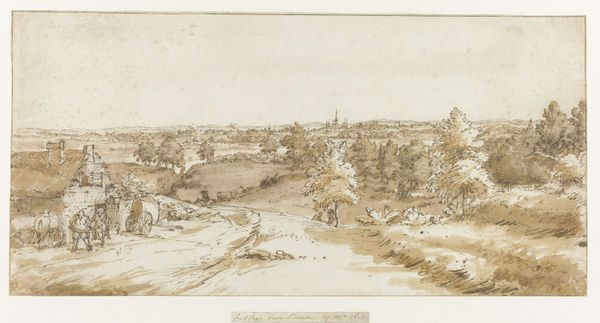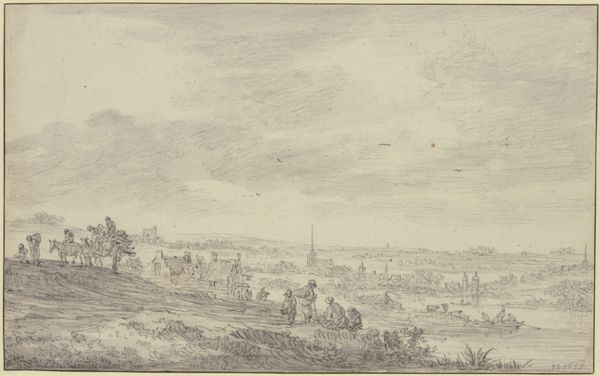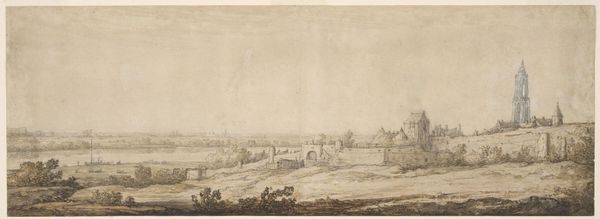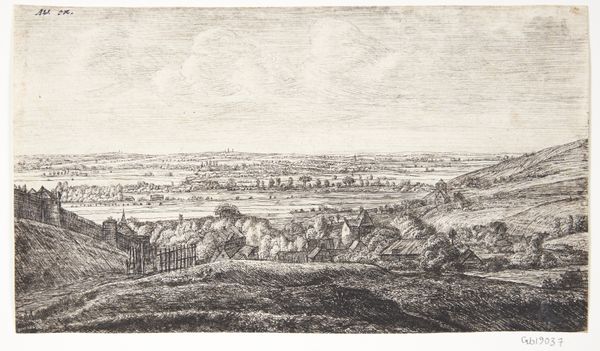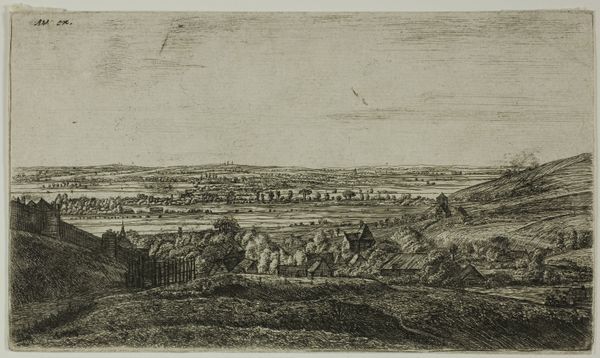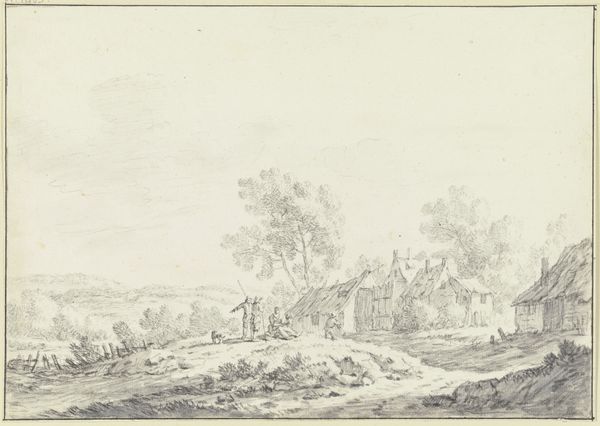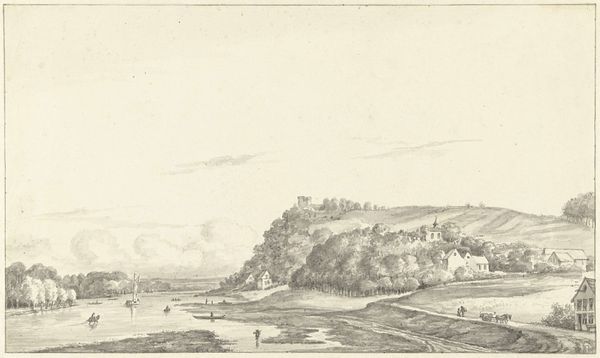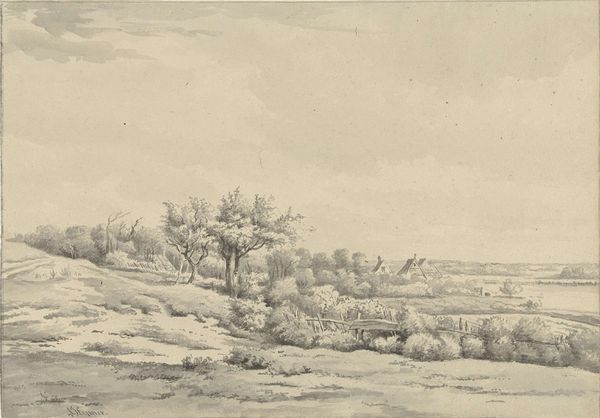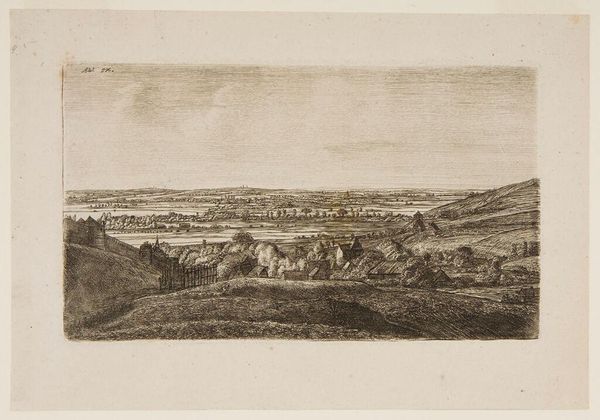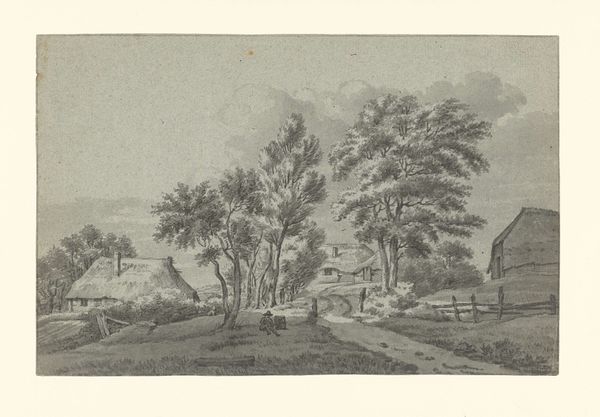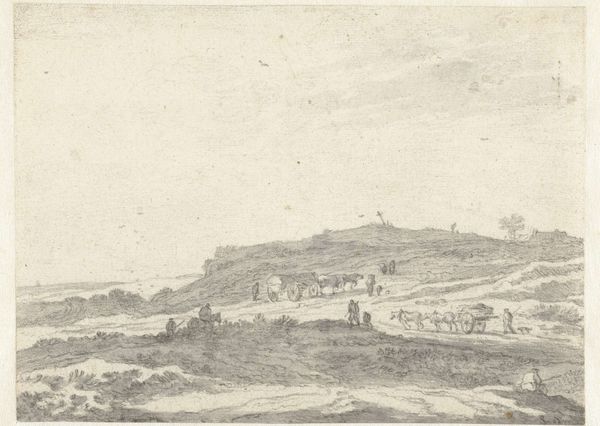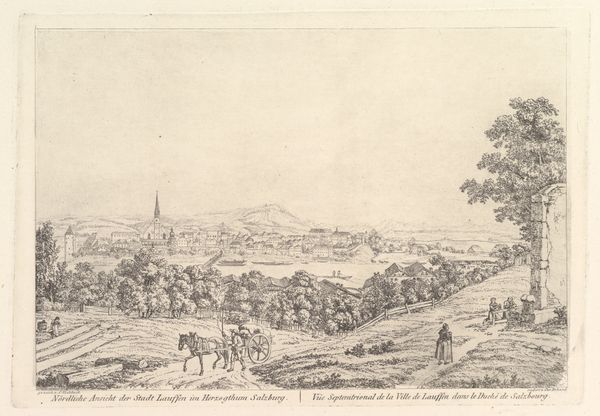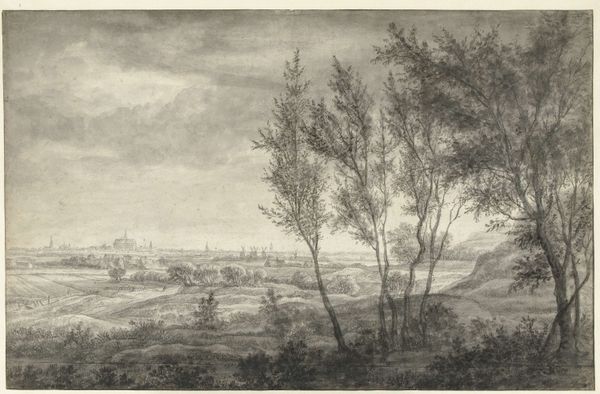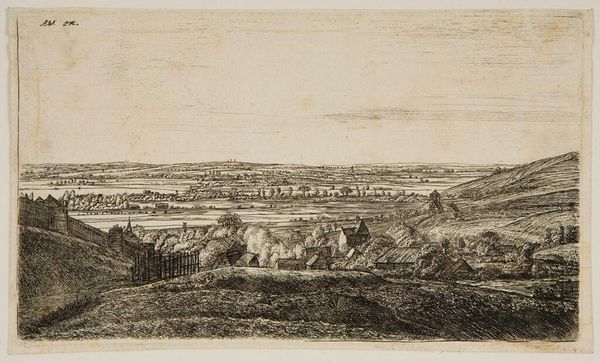
Dimensions: support: 149 x 194 mm
Copyright: CC-BY-NC-ND 4.0 DEED, Photo: Tate
Curator: William P. Sherlock’s wash drawing, “Wide Landscape with Lake in the Middle Distance,” captures a sweeping vista. What’s your first take on it? Editor: Bleak but serene. I see a landscape that’s both inviting and desolate, a testament to the British countryside during a time of immense agricultural change. Curator: Note the sepia wash, likely iron gall ink. Its pervasive use speaks volumes about the materials readily available and culturally favored for landscape sketching at the time. Editor: Sepia evokes a sense of nostalgia, doesn't it? It also speaks of transition. The distant lake, the fields—symbols of both promise and the relentless march of time. Curator: Indeed. The very act of rendering such an expansive view suggests a preoccupation with land ownership and its representation during the late 18th and early 19th centuries. Editor: I see echoes of the Picturesque movement, though with a somber tone—a subtle commentary on man's relationship with nature, represented through controlled ink washes and expressive line work. It also speaks of the value of the land. Curator: Precisely. Consider how the artistic practice was tied to the socio-economic landscape; Sherlock's work highlights the materials of art as embedded within a system. Editor: A melancholy reflection then—the cultural weight of land and its image made tangible.
